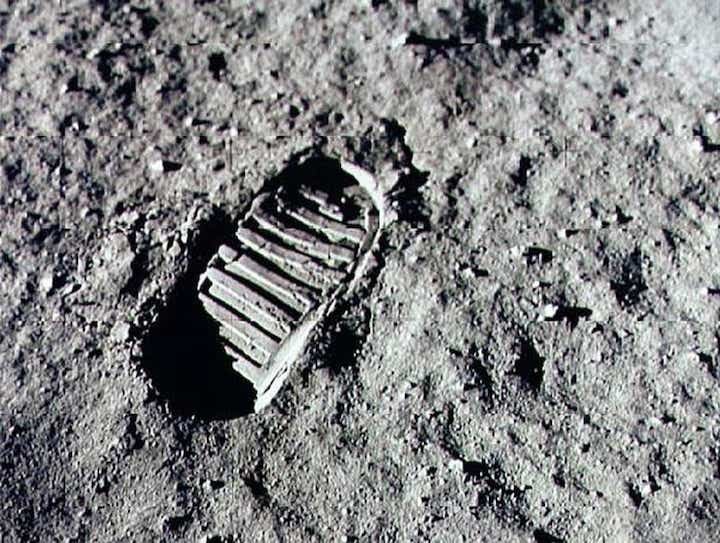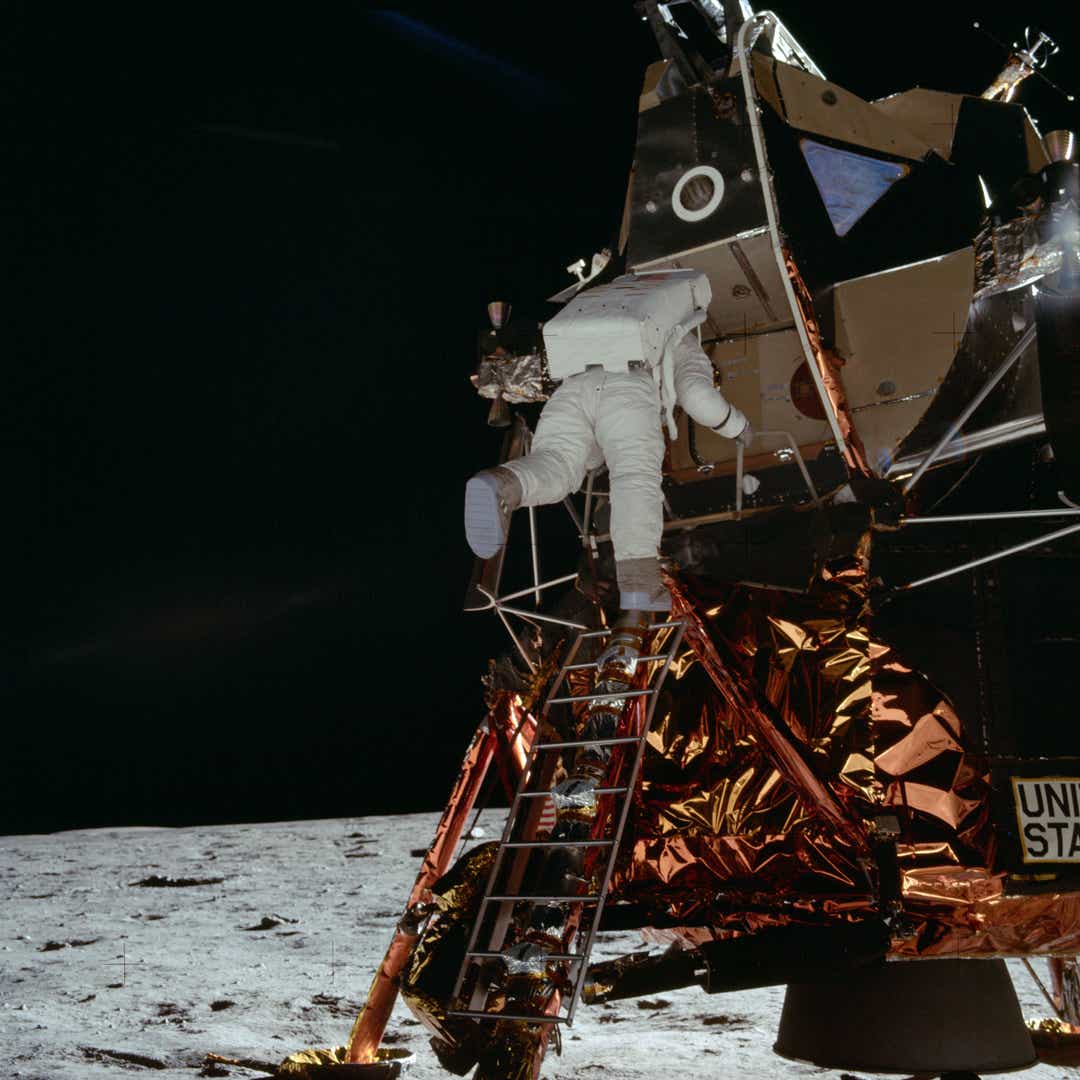16.07.2019
When the Apollo 11 astronauts set foot on the moon for the first time in July of 1969, they left more than their footprints behind.
The things they left, which remain there today, ranged from scientific to sentimental to practical. In all, Neil Armstrong and Buzz Aldrin left more than 100 objects on the lunar surface. These are among the most interesting:
1. Lots of footprints
While not technically objects, the footprints left by Neil Armstrong and Buzz Aldrin represent the most poignant evidence of the first human activity on the moon. Because there is no weather on the lunar surface, the footprints remain there today.

NASA has drafted guidelines to protect the Apollo 11 and Apollo 17 landing sites, including setting the areas as "off limits" for subsequent landings. The efforts aim to prevent future missions from disturbing lunar dust and destroying the footprints and abandoned equipment from these historic missions.
More: Apollo 50: See the events honoring the anniversary of the moon landing
2. The Apollo 11 "Eagle" lunar landing module descent stage
When the Eagle landed on the moon and then lifted off to carry Armstrong and Aldrin back to the command module, part of the landing module stayed behind. The descent stage remained on the moon's surface to act as a launch pad when the module lifted off.

A commemorative plaque was affixed to one of the landing module's legs, which read, "Here men from the planet Earth first set foot on the Moon July 1969, A.D. We came in peace for all mankind."
3. Mementos honoring fallen space explorers
The crew of Apollo 11 brought a patch from the Apollo 1 mission to honor Virgil "Gus" Grissom, Edward White and Roger Chafee, the astronauts who lost their lives when a fire swept through the Apollo 1 command module during a training exercise at Kennedy Space Center.
The astronauts also left medals honoring the late Russian cosmonauts Vladimir Komarov and Yuri Gagarin.
4. Messages of hope and peace
One of the more fascinating objects left on the moon by the Apollo 11 mission was a silicon disc with messages of goodwill from leaders in 73 countries. The disc was about the size of a half-dollar coin, with the words inscribed microscopically around the edge.
The disc bears the words "From Planet Earth, July 1969" in the center. It also lists the names of the members of Congress who signed legislation making the Apollo 11 mission possible, and the names of top NASA officials.
5. An American flag
While it's commonly thought the placement of a U.S. flag on the moon was the country's way of "claiming" the moon, the act was merely a symbolic gesture, according to NASA.
Astronauts would plant more flags during subsequent missions to the lunar surface. The current condition of these flags is a subject of speculation. Satellite imagery has apparently revealed at least some of the Apollo mission flags are still standing, although Buzz Aldrin said he saw the Apollo 11 flag knocked over by the blast from the landing module's engines as it took off.
More: 50 years later, the Apollo moon landing remains a shared experience that still unites us
Interestingly, it has been theorized that the flags left on the moon during the Apollo era have since faded to white under the harsh ultraviolet light from the sun.
6. Experiments
A collection of science experiments called the Early Apollo Scientific Experiment Package stayed on the lunar surface after the astronauts departed. One experiment measured the moon's seismic activity. Another monitored the effects of lunar dust on other equipment.

A third experiment, the only one from Apollo 11 that's still active, was the first portion of the Laser Ranging Retroreflector. This is a series of special mirrors designed to reflect laser beams sent through large telescopes on Earth. Data from this experiment helps scientists measure the distance between the Earth and the moon, and track the moon's orbit.
7. Tools and trash
Because the amount of weight the landing module could carry back was limited, Apollo 11 astronauts had to discard as much gear as they could to make room for samples. They left hammers, scoops, measuring devices and many other tools on the lunar surface.
To maximize space, they also left their waste bags. According to reports, the six Apollo missions left 96 bags of human waste on the moon. Later missions even left Lunar Roving Buggies on the surface to make room for samples. NASA collected nearly 850 pounds of moon rock and soil samples during the Apollo program.
Quelle: Florida Today
